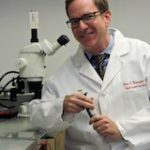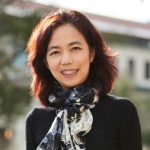Architects and Gardeners, a Captivating Developmental Biology Book, & an Inspiring Immigrant Story

David Shaywitz
Architects and Gardeners
Most leadership offsites I’ve attended have included some flavor of personality assessment – not so much to formally classify us, but rather to make the point that different people have different styles, and to emphasize that you can’t assume everyone you work with approaches the world the same way you do.
In this spirit, I wanted to share a simple binary personality framework that resonated with me, even though I learned about it from a surprising source — several articles about Game of Thrones author George R. R. Martin (see here, here).
According to Martin, writers tend to be either architects or gardeners.
Architects, he explains,
“plan everything ahead of time…They know how many rooms are going to be in the house, what kind of roof they’re going to have, where the wires are going to run, what kind of plumbing there’s going to be. They have the whole thing designed and blueprinted out before they even nail the first board up.”
Harry Potter author J.K. Rowling, for instance, has been described as “a great example of an architect.”
Martin says that gardeners, in contrast,
“dig a hole, drop in a seed and water it. They kind of know what seed it is. They know if [they] planted a fantasy seed or mystery seed or whatever. But as the plant comes up and they water it, they don’t know how many branches it’s going to have. They find out as it grows.”
Martin describes himself as “much more a gardener than an architect.”
While of course most writers — and most of us — have attributes of both architects and gardeners, these two archetypes can help explain some of the stylistic differences one encounters in biopharma and healthtech.
For instance, large pharma companies seem to select quite strongly for architects, particularly in senior leaders. Corporations value architect-like approaches to problems, generally wanting to see a complete, comprehensive plan that has been agreed to by all stakeholders before getting to work. (Safi Bahcall has discussed this nicely in Loonshots – see here, here).
In contrast, I suspect many startups are heavily populated by gardeners, innovators who begin with a promising idea or thesis, and then are comfortable (provided that their funding holds….) building it out, seeing where it goes, making agile adjustments on the fly as needed. The image of Mark Zuckerberg founding The Facebook comes to mind (see here).
In practice, this distinction isn’t a binary matter of either/or. Succeeding at scale in complex fields like biomedical R&D ultimately requires both sets of skills.

Iman Abuzeid, co-founder and CEO, Incredible Health
From the startup world, consider the example of Incredible Health co-founder Iman Abuzeid, a physician, management-consultant, and MBA by training. In a fascinating March 2020 podcast interview on 20VC, the highly recommended podcast hosted by Harry Stebbins, Abuzeid describes an approach that seems to combine the two.
After spending a year cultivating, perhaps gardener-like, a different sort of company (“a SaaS platform for small and medium healthcare business”), Dr. Abuzeid says her team discovered they “just could not get it to grow.”
At this point, the startup seemed to enter full-bore architect mode, switching to an approach that would have seemed at home in any large pharma (or management consulting slide deck).
The company conducted an incredibly comprehensive analysis including “coming up with a hundred different ideas” then “applying multiple filters.” After narrowing these down to 10 ideas, they did extensive customer research on each of these to wind up with the company that is now Incredible Health, a hiring platform for nurses, with a private company valuation (as of August 2022) of $1.65 billion.
If Dr. Abuzeid exemplifies how architect qualities can be helpful in a startup, others highlight the value of gardeners in big corporations. Ed Catmull, former CEO of Pixar, makes the case for why large enterprises should support gardeners, particularly businesses working in domains where creativity is critical, like movies – and, presumably, coming up with imaginative new medicines.
Discussing Catmull’s book Creativity, Inc in Forbes in 2014, I wrote,
“Catmull emphasizes that most creative works, such as movies, are emergent phenomena, the result of a multiplicity of interacting forces into which we only have limited understanding. Great projects aren’t born, but develop over time, and are inevitably associated with a vast number of false steps and dead-ends.”
I’ve also discuss the application of Catmull’s perspective to biopharma here, highlighting Catmull’s key insight that (as I distilled it) “Each project requires its own journey; each film is the result of an often-difficult, frequently chaotic, and largely unpredictable evolutionary process that (with considerable coaxing) reveals itself over time.”
Particularly in today’s difficult funding environment, I suspect at least some venture investors are placing more emphasis than usual on the sort of highly architected analysis and approach that Abuzeid and her team adopted.
I continue to hope that large pharmas will eventually learn to recognize the value of emergent discoveries, and the gardeners who cultivate them, as Catmull has vividly described and passionately championed. However, I’d also caution young gardeners to think twice before staking their careers on this still distant possibility. For those who are determined, learning the language of architects can help. Inside large corporations, substantive architect/gardener partnerships can prove particularly productive and offer the organization access to the best of both mindsets.
The Elegance of Developmental Biology
Developmental biology is an intrinsically captivating field, focused on how a single cell gives rise to a complex, fully-formed organism.
As Doug Melton and I wrote in Cell, back when I was a post-doc:
“As we study the life and lineage of a particular adult cell, we ask the same questions that a biographer asks of her subject: what were the critical decisions that defined the trajectory of this life, and when were they made? What was the contribution of neighbors, and what role was played by more distant influences? What was the role of chance? At what point was the final fate initially specified, and when was it ultimately sealed? In essence, we would like to understand the molecular biography of the cell.”
It turns out that a colleague of mine, Dr. Ben Stanger, a physician-scientist and gastroenterologist now at the University of Pennsylvania, and who was in Melton lab at the same time I was, has now written a book, From One Cell, about the history of developmental biology, and it’s absolutely captivating.

Ben Stanger, author, “From One Cell”
In a style that’s engaging but not self-absorbed, Dr. Stanger steps us through the fascinating history of the field. Perhaps because of his own laboratory experience, he has a particular appreciation for the technical difficulty of key experiments, a perspective that brings a sense of immediacy to his descriptions of the work and allows us to appreciate the magnitude of the achievements.
Even when he moves to more contemporary advances, like the discovery of induced pluripotent stem cells (iPSCs), his explanations are clear, simple without being simplistic. You’re left with a visceral appreciation for the beauty of development, the virtue of basic research, and the promise this field continues to offer for the understanding and treatment of disease. It’s a magnificent and inspiring read.
Admittedly, it is perhaps a less than ideal listen; I had purchased the audiobook, and while the professional audiobook narrator has a fine voice, he mispronounces many essential terms (like “Drosophila”).
Hopefully, if Dr. Stanger writes a second edition, he will narrate the audiobook himself.
While we’re on the subject of audiobooks, two that are, in fact, narrated by their respective authors, and which I really enjoyed are:
- Bruce Springsteen’s autobiography, Born To Run. From start to finish, a gritty and gripping account of Springsteen’s rise to stardom. His success wasn’t inevitable. He worked incredibly hard, and when he did manage to catch a break, he fought fiercely (including acting like a bit of a control freak) to ensure these hard-won opportunities were leveraged fully. Like so many of The Boss’s songs, it’s an essential listen.
- Easy Money: Cryptocurrency, Casino Capitalism, and the Golden Age of Fraud by Ben McKenzie and Jacob Silverman. The OC’s Ben McKenzie (an econ major in college) and journalist Jacob Silverman were early skeptics of cryptocurrency. They describe – with conspicuous delight, and perhaps just a tad too much smugness, crypto’s meteoric rise, devasting fall, and many shady champions. An important cautionary tale – and a wild ride.
The Inspiring Immigrant Story of a Stanford AI Leader
While most a16z podcasts relating to AI tend to emphasize the technology, the latest episode of “Bio Eats World” features an inspiring discussion with Stanford AI pioneer Fei-Fei Li, and focuses mostly on her remarkable life story. (Her journey also features prominently, we learn, in her just-published book entitled “The Worlds I See.”)

Fei-Fei Li, professor, Stanford University
Li is perhaps best known for her foundational work in computer vision, and specifically her critical early recognition of the need for a massive robust dataset to train AI models. Her development of ImageNet (first described in this 2009 paper) enabled the training of deep learning models that dramatically accelerated and energized the field.
Li was born in Beijing and raised in Chengdu. As a child she was a “STEM kid,” and particularly loved physics, she tells Vijay Pande, Andreessen-Horowitz general partner, Bio+Health lead, and host of “Bio Eats World.”
When Li was 15, her family immigrated to Parsippany, New Jersey, where she attended public high school. She says she barely spoke a word of English at the time and took ESL (English as a Second Language) classes in every subject but math.
A “profound” influence during high school, she says, was a math teacher named Mr. Sabella, who really took her under his wing, even setting up an individual advanced calculus class for her, which he then taught.
She credits her parents for supporting her pursuit of her passions. In particular, she says, they never pushed her to be a doctor or lawyer. She tells Pande that when her parents’ friends and neighbors learned she was majoring in physics, they told her parents to discourage her from pursuing such a “useless” area of study. Her mom, she relates with pride, simply responded, “She likes it.”
Li describes a remarkable double life as an undergraduate at Princeton. During the week, she says, she was a typical student, who enjoyed college life and “loved physics.”
Yet because her parents’ jobs had become precarious, she scraped together money to buy a dry cleaner in Parsippany, which she would manage in person from Friday night through Sunday, before returning to student life at Princeton.
Pande astutely observes this may have served as useful entrepreneurial training, adding “you weren’t playing around – it was survival.”
Ultimately, Li’s career in computer vision took off, leading her ultimately to Stanford University, where, among her other responsibilities, she is the founding co-director of the Stanford Institute for Human-Centered AI.
AI, Li says, is at a real inflection point. Like DeepMind founder Mustafa Suleyman (whose new book, The Coming Wave, I just reviewed in the Wall Street Journal – see here), Li emphasizes that AI technologies are powerful tools that can be used for both good and ill. She explains that she’s less concerned about the rhetoric of human extinction (a preoccupation of some AI “doomers”), and more interested in identifying pragmatic ways to ensure these powerful tools contribute positively. Li says this requires us not only to embrace the tools, but to recognize our responsibilities.
She emphasizes that policy should involve not just guardrails but also good incentive structures, and she would like to see more public sector investment in the technology so that all the resources and talent don’t wind up at private companies.
In applying AI to healthcare, she notes that in both healthcare and medicine, there is a robust regulatory framework already, and says we don’t need to reinvent the wheel. Rather, she suggests, we should update the framework where needed, and “inform, educate, and communicate with regulators” regarding AI.
She acknowledges the existence of a “catastrophic layer” of concerns, and worries about disinformation, in particular the potent combination of AI and social media (Suleyman’s similar concern around deepfakes is highlighted in the review).
More hopefully, and sounding a bit like John Maynard Keynes, Li says she “dreams about” a “dignity economy,” where productivity is increased so much by tech that we work because “we feel it gives us agency and dignity and reward,” rather than representing a daily grind we endure so we can put food on the table.
She acknowledges that attaining this nirvana will require hard work and require us to navigate many potential pitfalls; In particular, she worries about AI’s impact on “communities that are underserved and underrepresented.”
Li’s remarkable journey, and her reflections on it as elicited by Pande, engage and inspire. While Li’s science clearly centers around AI, her story serves to highlight the promise and possibility of human potential.





